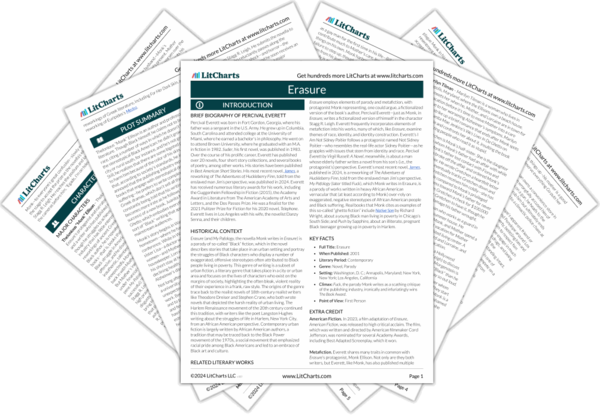Monk returns to his hotel to find a death threat written on a bookmark: “I’ll kill you, you mimetic Philistine.” The next day, he visits his sister’s clinic in Southeast D.C. He introduces himself to the receptionist, Yvonne, as ’s brother. “The writer brother,” exclaims Yvonne. Monk takes a seat next to a young woman with long blue fingernails. She holds a young boy in her lap. The woman asks what kind of books Monk writes. He says “novels,” then amends this to “stories.” The woman says her cousin gave her
Their Eyes Were Watching God to read, and she liked it. She liked
Cane, too. Monk asks the woman if she went to college, and she laughs as she tells him she didn’t even finish high school. They stop talking then, and Monk feels like the stupid one for having assumed, wrongly, that the woman would be stupid.


